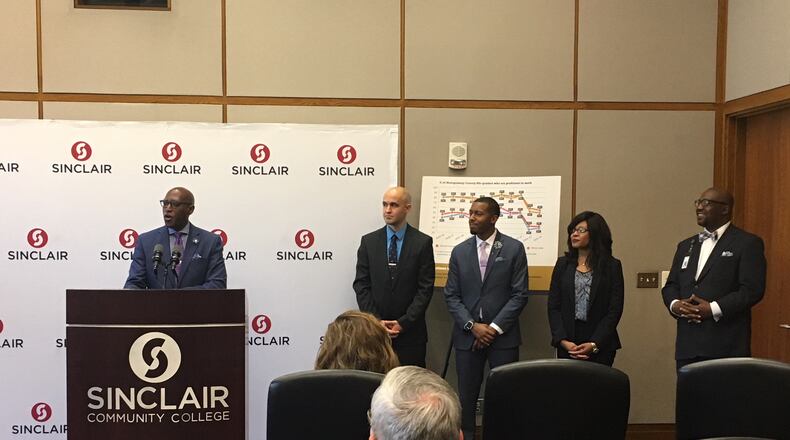The equity fellows will consist of three teachers, one administrator and one member of the community at each school who will identify practices and policies that impede under-represented students at each school. This includes monitoring achievement and suspension data broken down by race and promoting cultural responsive teaching.
RELATED: 6 factors that contribute to the black achievement gap at Dayton schools
At DPS, the teams will initially focus on Ponitz Career Technology Center, Thurgood Marshall High School, Dunbar Early College High School, Fairview Elementary and Wright Brothers Middle School. At Northmont, the target schools are Kleptz Early Learning Center, Northmoor Elementary, Northwood Elementary, the middle school and high school.
At an event announcing the effort Thursday, Dayton Superintendent Elizabeth Lolli said with this program “we will be able to monitor and remove those barriers that are often times unseen barriers, and … barriers that we can’t remove easily.”
She hopes the effort closes achievement gaps district-wide.
“We’re a very, very diverse school system and we become more diverse every week, and we want to make sure that we are serving all students that come to the Dayton public schools,” she said.
Lolli was flanked by charts showing African-American students — particularly black males — performing below other groups of students in numerous academic measures countywide.
The black-white achievement gap is a national phenomenon, though a study released by the Brookings Institute this year found it has grown worse in Ohio while improving in most states across the country.
“Education is key to a strong economy, and every child should have the opportunity to achieve his or her fullest potential, but existing systems don’t always support the success of students, particularly students of color and those from low-income families,” StriveTogether President and CEO Jennifer Blatz said.
The grant is part of a $20 million initiative by StriveTogether, based in Cincinnati, to test ways to improve economic mobility for families across the country. Initial projects were funded in Dayton and eight other cities across the U.S.
The local project is a partnership including the Montgomery County Educational Service Center and Sinclair Community College. Learn to Earn CEO Tom Lasley said once it is tested at the two districts, the hope is to scale it up to other schools, including colleges and universities.
The project will be led by Michael Carter, Sinclair’s chief diversity officer and senior advisor to the president.
Carter said this effort is unique in its use of data to tailor programs to each school and sub-population.
“There is no magic wand,” he said. “This will happen with hard work and passion and love for the students we serve.”
Sinclair President Steven Johnson cited some local progress. Over the past six years, African-American students who have enrolled at Sinclair have seen a 128 percent increase in completion rates of degrees and certificates, he said.
“But,” he added, “we have a long way to go.”
Coming Sunday
As part of its project seeking the path forward for improving Dayton Public Schools, the Dayton Daily News examines the achievement gap at DPS and ways experts say it can be bridged.
About the Author

